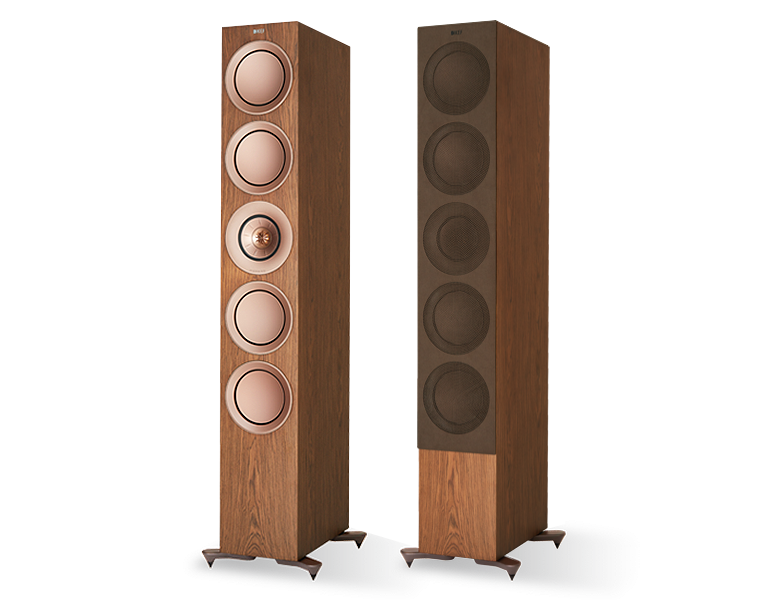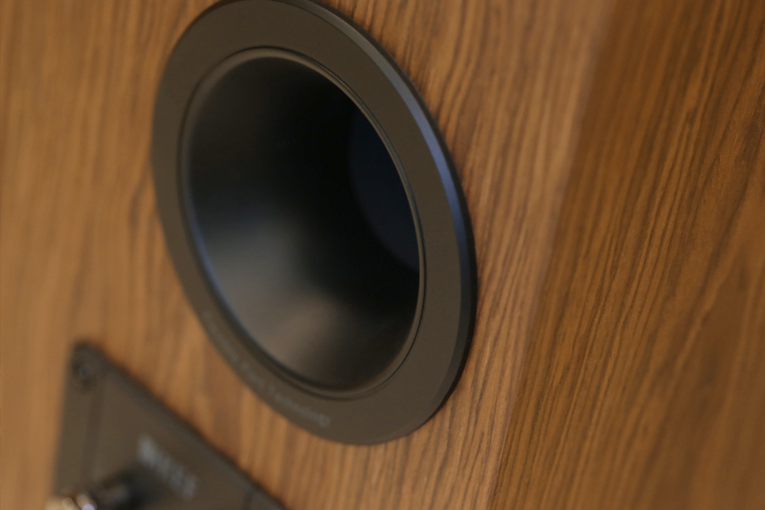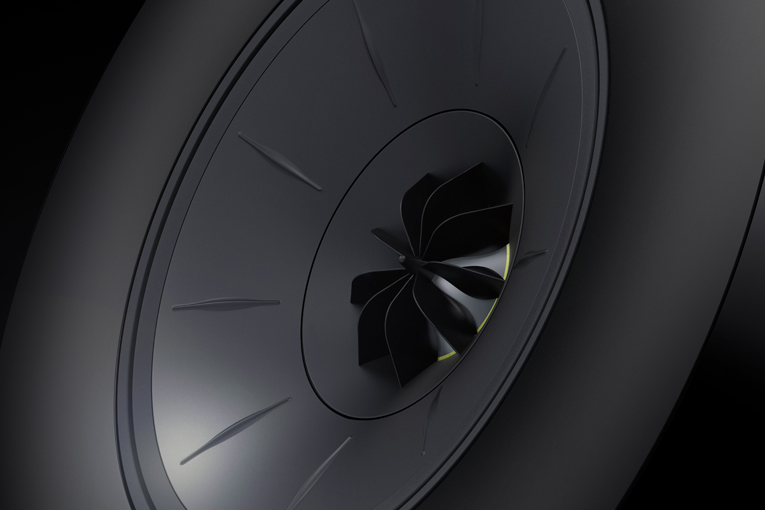 KEF’s latest generation of R Series loudspeakers, introduced in 2018, includes four main stereo models: the stand-mounted R3 ($1999.98) and three floorstanders, the R5 ($2799.98), the R7 ($3799.98), and the R11 ($4999.98). (All prices per pair, USD.) Last month, in Diego Estan’s review of the R11 for this site, he declared, “you’d be hard-pressed to find a better speaker at the price.”
KEF’s latest generation of R Series loudspeakers, introduced in 2018, includes four main stereo models: the stand-mounted R3 ($1999.98) and three floorstanders, the R5 ($2799.98), the R7 ($3799.98), and the R11 ($4999.98). (All prices per pair, USD.) Last month, in Diego Estan’s review of the R11 for this site, he declared, “you’d be hard-pressed to find a better speaker at the price.”
The 83.1-pound R11 stands 49.2”H x 7.9”W x 15.1” D, and comes with outrigger footers to make the tall, slender speaker more stable (51.0”H x 12.2”W x 15.1”D with the footers.). Like all R Series speakers, the R11 is available in finishes of Gloss Black, Gloss White, or Walnut, each with color-coordinated trim pieces, and the midrange and high frequencies are reproduced by a 12th-generation Uni-Q driver. The Uni-Q is coaxial -- a 1” aluminum-dome tweeter is positioned in the throat of a 5” aluminum-cone midrange driver, to provide a point-source wavelaunch for all frequencies above 400Hz. The cone also acts as a waveguide for the dome, acoustically boosting its output and controlling its dispersion at certain frequencies. Diego listed three main improvements in this version of the Uni-Q, as claimed by KEF: “There’s a new motor system with a shaped and undercut pole, and symmetrical aluminum demodulation rings to significantly reduce inductance in the lower midrange. The midrange cone, surround, and decoupler have also all been refined. KEF has also developed a tweeter-gap damper, to mitigate the negative acoustic effects of the small channel of air between the coaxially mounted midrange cone and tweeter.”

Surrounding the Uni-Q is a Shadow Flare trim piece, which, KEF claims, helps eliminate diffraction by the edges of the speaker’s cabinet, for a smoother high-frequency response.
Frequencies below 400Hz are reproduced by the R11’s four woofers -- two above and two below the Uni-Q on the front baffle -- and, high and low on the rear panel, two ports, the lining of each of which has a flexible center portion to help reduce standing waves.
Driving the R11s with his McIntosh Laboratory MC302 stereo power amplifier (300Wpc into 8, 4, or 2 ohms), Diego at first found the bass “tight, ample, extended, very fast, and rhythmic, but somewhat boomy.” This didn’t surprise him -- “the R11s are a lot of speaker for my small room,” which measures 15’L x 12’W x 8’H. To fix the boom, he plugged the top port of each R11 using their supplied foam plugs, left the bottom ports open, and listened again. He concluded that this “reduced a big peak at 50Hz that was present with all four ports open.” Diego ended up with a low-end bass response down to 27Hz, -3dB, and with an overall frequency response “as textbook as my room will allow without equalization.”

After listening to “Nothing At All,” from Santana’s Shaman (16-bit/44.1kHz FLAC, Arista), Diego wrote: “What most astounded me about the R11’s bass was its speed. The pace and rhythm of bass notes were fantastic. It felt as if the R11s’ eight woofers were starting and stopping on a dime in lock step.” He then tried “Locked in the Trunk of a Car,” from the Tragically Hip’s Yer Favourites (16/44.1 FLAC, Universal): “The opening brushed cymbal to left of center . . . seemed to appear from nowhere, and was delivered with perfect delicacy and extension as it gently grew in volume and spread into the right half of the soundstage.” This track also revealed to him that “The R11s could also play very loud while their sound remained composed. I pushed up the volume to the limit of my hearing (close to 100dB) but heard no obvious compression or edginess.”
Perhaps the most important quality of the R11 was what Diego heard when he played “My Skin,” from Natalie Merchant’s Ophelia (16/44.1 FLAC, Elektra): “The KEFs didn’t draw special attention to any part of the audioband. With this and other tracks, their sound seemed perfectly balanced from the low bass all the way up through the upper treble. Nor did they draw attention to themselves -- they were very transparent, providing that treasured illusion of a pair of speakers ‘disappearing’ from the room to leave behind only the music.”

That Diego was taken with the R11 was clear in his “Conclusion”: “KEF’s R Series R11 speaker impressed the heck out of me. First, it’s nice to look at -- a pretty speaker of first-class fit and finish, and color-coordinated from top to bottom. Second, it’s chock full of cutting-edge technological innovation: e.g., the 12th generation of KEF’s Uni-Q driver, Shadow Flare diffraction control, and flexible port linings. But none of that would matter without the third thing: the R11 sounds even better than it looks.”
He finished by saying, “Were I in the market for a pair of floorstanders, I’d buy KEF R11s.” That Diego was so impressed by the R11 didn’t really surprise us -- seven other KEF speakers already appear in our list of Recommended Reference Components. The R11 is now the eighth.
Manufacturer contact information:
KEF
GP Acoustics (UK) Ltd.
Eccleston Road, Tovil
Maidstone, Kent ME15 6QP
England, UK
Phone: +44 (0)1622-672261
Fax: +44 (0)162-750653
E-mail: support@kef.com
Website: www.kef.com






















